I have shared several pieces about the Linux vps installation desktop environment (many people have special needs, especially for network projects, which Lao Zuo doesn't know). In a previous article on the XFCE environment, @ mayahs mentioned that the LXDE environment is more resource efficient and more like the WIN system desktop, which Lao Zuo has never seen before. For me, first organize the LXED installation tutorial, and then check the resource usage of the interface after installation.
Before this article, Lao Zuo had assigned several other Linux vps host VNC desktop environments:
Linux VPS (CentOS) installation VNC remote desktop (complete test)
Linux VPS CentOS Installing FreeNX Desktop Environment
Full Linux VPS (CentOS) installation VNC+XFCE visual desktop environment with FireFox browser
If you are interested in it, you can also try to install it to see which one you like. In this article, Lao Zuo will share how to install the LXDE+VNC desktop using the Linux VPS Debian (I used the Debian 6 32-bit in the test exercise).
First, make sure the Debian version and component system are the latest
apt-get update
apt-get upgrade
apt-get dist-upgrade
If there is any Do you want to continue [Y/n] in the process, we must enter y and then press Enter to continue.
Second, install the LXDE environment
apt-get install xorg lxde-core tightvncserver
Similarly, if there is any Do you want to continue [Y/n] in the process, we must enter y and then press Enter to continue.
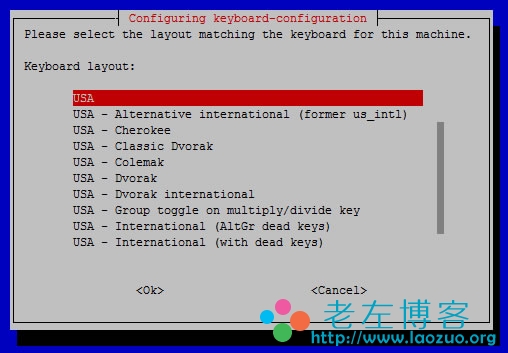
There is a machine region selection in the process, and we can enter by default.
Third, start VNC/enter password
tightvncserver :1
Then we need to enter the VNC login password. When entering the password, we should pay attention to that it is invisible. We need to see our keyboard clearly, enter Enter, and then enter it again.
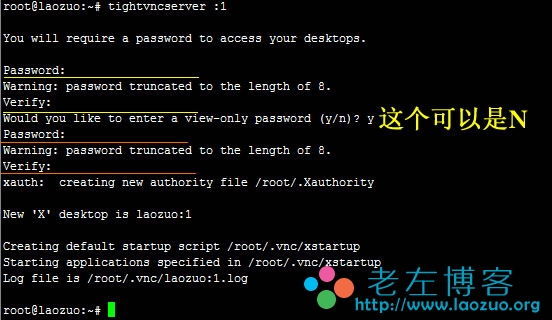
We will see the line "Would you like to enter a view only password (y/n)" and ask whether we need a readable account password. We can enter y for the password, or n for not. It doesn't matter.
Fourth, pause VNC
tightvncserver -kill :1
Fifth, configure the xstartup system file
vi ~/.vnc/xstartup
Then add the following script code at the end of the file
lxterminal &
/usr/bin/lxsession -s LXDE &
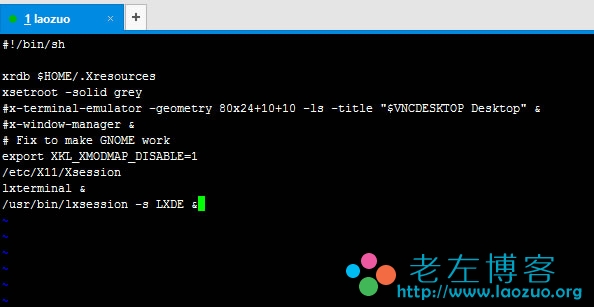
Save and exit.
Sixth, restart VNC
tightvncserver :1
After restarting, we can use RealVNC software To log in to the desktop environment, you can use ip: 5901 to log in. The password is the VNC password set above.
Seventh, install Firefox and support simplified Chinese
We don't like the browser in the default environment. We prefer FIREFOX Firefox, but in DEBIAN, Firefox is called iceweasel, and we need to install it.
apt-get install iceweasel
If we need to log in to the Chinese website, we also need to solve the problem of no garbled Chinese code. We need to support the simplified Chinese language.
apt-get install ttf-arphic-ukai ttf-arphic-uming ttf-arphic-gbsn00lp ttf-arphic-bkai00mp ttf-arphic-bsmi00lp
So, let's log in to the LXDE+VNC desktop to see what it looks like.
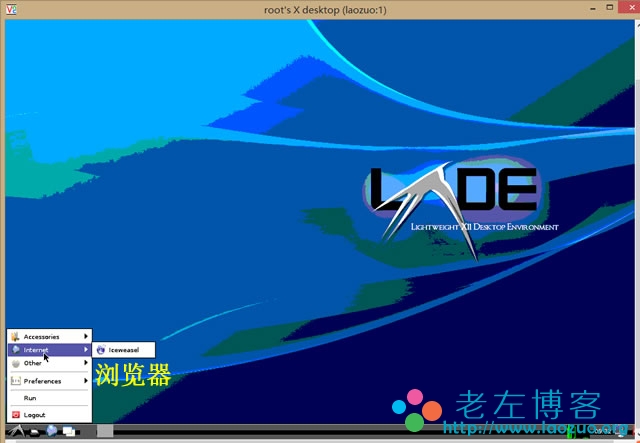
Then log in to laozuo.org blog to see what it looks like.
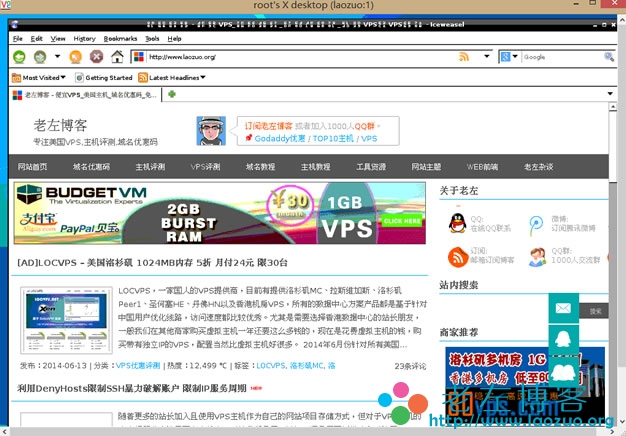
It looks pretty good. Check the memory usage.

The memory usage is really small. If you like or need the VNC desktop, here is another LXDE+VNC desktop option.




















